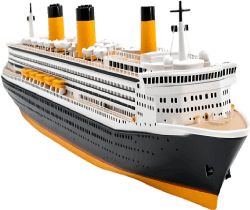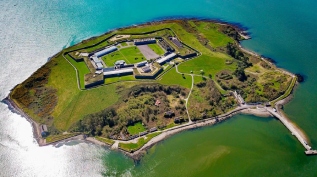Why Cobh is a Must-Visit: Titanic Connections, Stunning Views, and Rich History
On Ireland’s southern coast lies Cobh, which gives the odd impression of every cobblestone, every brightly painted row house, and every rush of sea breeze whispering stories of emigration, maritime wins, and tragic goodbyes. Once known as Queenstown, Cobh may perhaps always be benefitting from being almost synonymous as the Titanic’s last port of call in 1912.
From Fishing Village to Maritime Hub
During the early 1800s, a transformation began in Cobh, from merely a fishing village to a prominent maritime centre. During the Napoleonic Wars, the well-sheltered harbour was made strategic for use by the British naval forces, able to handle almost 300 ships at a time. The town grew, and during Queen Victoria’s visit in 1849, it was renamed Queenstown in her honour. However, in 1920, the town readopted its Irish name and was once more called Cobh.
Link with Titanic

On April 11, 1912, before heading off on her ill fated maiden voyage, the RMS Titanic made her last call at the port of Cobh-It was then called Queenstown. There were just 123 passengers who boarded here, many being Irish emigrants hoping to start a new life in the States. Alas, only 44 of these passengers survived the catastrophe.
Cobh has marked the Titanic tragedy in its 20th-century existence today through the Titanic Experience at the original White Star Line ticket office. Guests can participate in the guided tour following the path of Titanic passengers, thus affording them a very moving appreciation of the passengers’ stories.
Emigration and The Great Famine
On the Titanic scene, Cobh played a big role in Irish history as a gateway for millions of emigrants going into the Great Famine of the 19th and early 20th centuries. Over 2.5 million Irish emigrated to North America between 1848 and 1950, many by way of Cobh. The Cobh Heritage Centre hosts progressive exhibits related to Irish emigration, the Great Famine, and maritime history of the town, thus providing a poignant perspective on the lives of those who left for a better future.
Architectural and Cultural Landmarks
One has the opportunity of witnessing the tallest Gothic throne in the town: Dominating the skyline is St. Colman’s, a splendid example of Gothic Revival architecture. Finished in 1919, the spire of which is the tallest church spire in Ireland at an elevation of 91.4 metres (300 feet), it also has the largest carillon in the British Isles, with 49 bells.
Cobh’s streets are bustling with vibrancy and lined with colourful Victorian houses, which gave it the nickname “deck of cards” for their tiered arrangement up the hillside. The waterfront of the town is equally picturesque and offers a panoramic view of Cork Harbour, one of the largest natural harbours in the world.
Spike Island – Ireland’s Alcatraz

The alternative name “Ireland’s Alcatraz” can be assigned to Spike Island, a very short ferry ride away from Cobh. The island has a rich past: the times have seen it as a monastic settlement, as a British fort, and as a prison. Today it gives guided tours through its fascinating past, giving the visitor to spend some time looking at history from a very different angle.
A Town That Remembers
The Old Church Cemetery in Cobh is a stark reminder of this town’s maritime past. It hosts the remains of some victims of the RMS Lusitania, which was torpedoed in World War I. There are also graves of people related to the Titanic in this cemetery, hence affirming Cobh’s position in maritime history.
Visiting Cobh Today
At present, Cobh is an active town where history effortlessly melds into present-day attractions. One can savor the scenic strolls triggered by the Harbour Walk, go museum hopping, or hang out at a couple of cafes by the water. History woven with beautiful architecture and welcoming ambience gives Cobh a distinct flavor of the Irish present and past.
